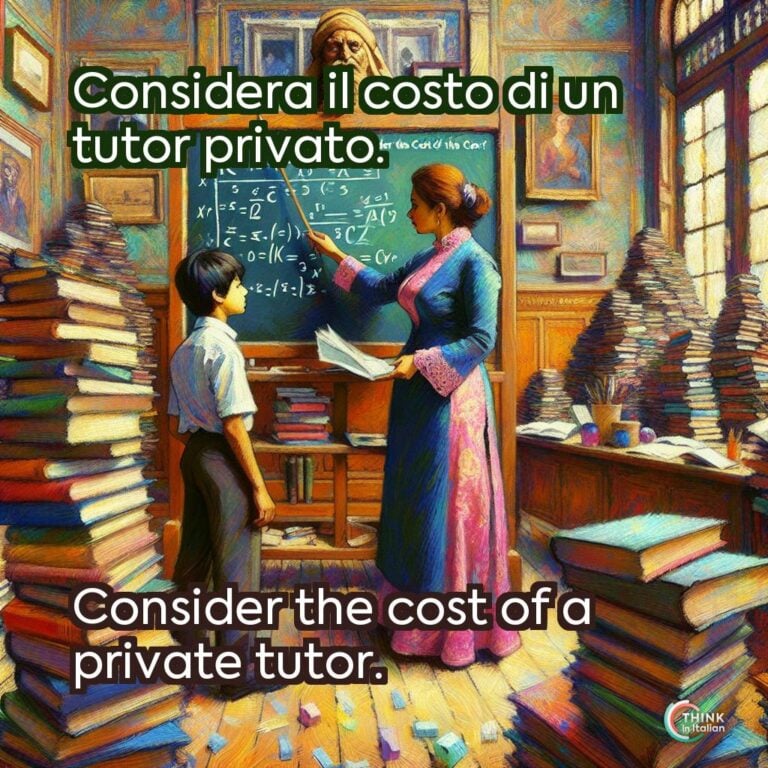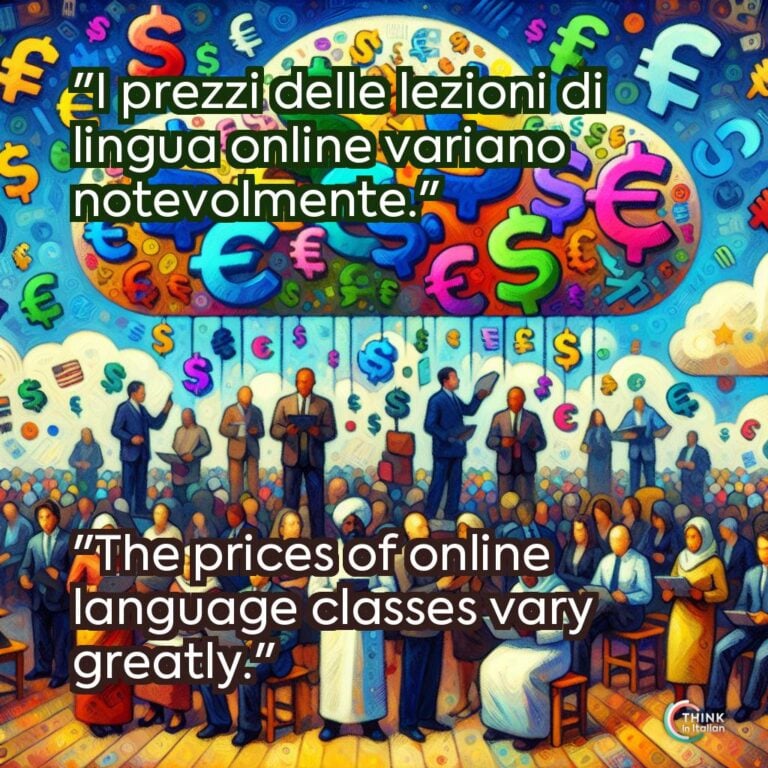How Much do Online Language Classes Cost?
Learning a new language online has revolutionized the way people around the world approach language acquisition. Unlike traditional classroom settings, online learning offers flexibility, allowing you to choose when, where, and how you learn.
Whether your goal is to learn Italian to travel, to gain fluency in Mandarin for business purposes, or simply enjoy the cognitive benefits of learning a new language, there’s an option tailored for you.
The cost of online language classes varies widely, depending on teaching method, platform, instructor’s qualifications, and language. This diversity means there’s something for every budget, learning style, and objective.
In this guide, I will explore the different teaching methods, break down their costs, and highlight the platforms that offer the best value for your goals.
Teaching Methods
Choose the Teaching Method That Suits you
Choosing the right teaching method is one of the most important steps when beginning your language-learning journey. The method you choose should align with your learning style, goals, and schedule.
No matter what you choose, the key is consistency and engagement. The best method is the one you can stick with, so choose something that motivates you to keep learning and practicing every day.
The first question you should ask yourself is: why? For instance, why learn Italian? Do you want to gain more cultural knowledge? Or do you want to improve your conversational skills?
Let me show you three different styles and what you can gain from each and everyone of them.
What to Expect
Synchronous group classes (for example Babbel Live and Lingoda)
- Ideal for extroverted learners who benefit from social interaction and shared experiences.
- They often mimic traditional classroom settings, allowing students to learn through guided discussions, role-plays, and collaborative activities.
- Perfect to build confidence in speaking and listening.
- Prices typically range between $7 and $30 per session.
- Lack of personalized feedback. If your goals are specific—such as improving your accent or preparing for a certification—group classes might not offer the tailored support you need.
Synchronous 1-to-1 Lessons (for example Italki and Preply)
- Best option for personalized and intensive language learning.
- They provide the immersive experience necessary to truly think in the language, focusing on conversational skills and encouraging you to actively use the language from the start.
- Tutors focus entirely on your individual needs, whether that’s mastering Italian verb conjugations, perfecting your pronunciation, or preparing for a job interview.
- Prices vary a lot, ranging between as little as $5 per session and $80, depending on their qualifications and experience.
Pre-Recorded Courses (for example Duolingo, Rosetta Stone, and Busuu)
- Excellent for learners who value flexibility and self-paced study.
- These courses focus on vocabulary building, basic grammar, and pronunciation, making them ideal for beginners exploring a new language or learners who need extra practice between live lessons.
- Offer affordable subscriptions, typically ranging from $7 to $50 per month.
- They lack live interaction; to maximize effectiveness, pair these courses with a conversational practice platform like Think in Italian, which bridges the gap between passive learning and active language use.
How Much do Language Classes Cost?
Broader Comparison Across Platforms
| Platform | Best For | Cost Range | Key Features |
|---|---|---|---|
| Duolingo | Casual learners, gamification | Free; $7–$15/month | Bite-sized lessons, gamified interface |
| Italki | Personalized 1:1 tutoring | $5–$80/hour | Choose from professional or community tutors |
| Think in Italian | Immersive learning, Italian | $39–$89/month | Audio-based courses, live tutoring |
| Preply | Flexible 1:1 lessons | $5–$40/hour | Tutor marketplace, focus on conversation |
| Rosetta Stone | Structured courses | $7–$12/month | Speech recognition, multi-language bundles |
| LingQ | Advanced learners, content | Free; $12.99–$39.99 | Import content, SRS-based vocabulary learning |
The Price Range of Tutors in Italki
Italki is one of the most popular platforms for 1-to-1 tutoring that offers a vast range of tutors across numerous languages. I will use this as baseline to illustrate average prices so that you can have an idea of how much it costs to learn a language.
Of course, prices depend on the tutor’s credentials and experience, as well as the demand for the language. Here’s a breakdown of tutor pricing across popular languages on the platform:
English Tutors
English tutors on Italki include both native and non-native speakers, with non-native tutors dominating the platform. There is also a high proportion of professional teachers who offer structured lessons for specific goals like business English or test preparation.
- Under $10/hour: 18.6% of tutors.
- $11–$30/hour: 67.2% of tutors.
- Above $30/hour: 14.2% of tutors.
Japanese Tutors
Most Japanese tutors are native speakers and are evenly divided between professional teachers, who provide structured learning, and community tutors, who focus on conversational practice.
- Under $10/hour: 11.7% of tutors.
- $11–$30/hour: 74.7% of tutors.
- Above $30/hour: 13.7% of tutors.
Spanish Tutors
Spanish is one of the most affordable languages to learn on Italki. Native Spanish tutors significantly outnumber non-natives, and there are 1,000 more community tutors than professional ones, making it a great choice for learners on a budget.
- Under $10/hour: 36.3% of tutors.
- $11–$30/hour: 57.1% of tutors.
- Above $30/hour: 6.6% of tutors.
Chinese Tutors
Native Chinese tutors triple the number of non-natives on Italki, with more community tutors than professional ones. This balance ensures affordable rates and access to cultural insights from native speakers.
- Under $10/hour: 10.4% of tutors.
- $11–$30/hour: 77.9% of tutors.
- Above $30/hour: 11.7% of tutors.
French Tutors
French tutors are predominantly native speakers, and community tutors outnumber professional ones. Many tutors fall in the mid-range price bracket, allowing learners to access high-quality instruction without breaking the bank.
- Under $10/hour: 12% of tutors.
- $11–$30/hour: 69.6% of tutors.
- Above $30/hour: 18.5% of tutors.
Italian Tutors
Native Italian tutors are twice as common as non-native tutors, and there are 200 more community tutors than professional ones. This variety makes learning Italian on Italki both affordable and culturally enriching.
- Under $10/hour: 15.1% of tutors.
- $11–$30/hour: 52.4% of tutors.
- Above $30/hour: 12.5% of tutors.
German Tutors
German tutors are slightly more expensive compared to other languages. Native tutors outnumber non-natives, and community tutors dominate, making it an excellent choice for conversational practice.
- Under $10/hour: 2.6% of tutors.
- $11–$30/hour: 68.9% of tutors.
- Above $30/hour: 28.5% of tutors.
Portuguese Tutors
Portuguese is one of the most affordable languages to learn on Italki. Native tutors far outnumber non-natives, and community tutors are twice as common as professional ones.
- Under $10/hour: 40.6% of tutors.
- $11–$30/hour: 54.9% of tutors.
- Above $30/hour: 4.6% of tutors.
Korean Tutors
Korean tutors are predominantly native speakers, with community tutors doubling the number of professional ones. This ensures plenty of affordable options for learners focusing on conversational fluency.
- Under $10/hour: 8.1% of tutors.
- $11–$30/hour: 78.4% of tutors.
- Above $30/hour: 13.6% of tutors.
Arabic Tutors
Arabic tutors on Italki are mostly native speakers, with community tutors outnumbering professional ones. The lower cost range makes Arabic a budget-friendly choice for language learners.
- Under $10/hour: 37.7% of tutors.
- $11–$30/hour: 57.5% of tutors.
- Above $30/hour: 4.8% of tutors.
Why Learn a Language?
Cultural Gaining
Mastering a language lets you connect with people and cultures in authentic ways. Take Italian, for instance: imagine being able to understand idiomatic expressions, slang, regional nuances, and humor.
It’ll open doors to deeper conversations and richer travel experiences, allowing you to appreciate Italian traditions, culture, and values.
Beyond travel, cultural awareness gained through language learning enriches your worldview. It allows you to engage with literature, films, and music in their original form, creating a more profound connection to the material.
ROI (Return on Investment) Analysis
Learning a new language is an investment with tangible rewards:
- Career Advancement: Fluency in high-demand languages like Mandarin, German, or Spanish can boost your salary by 10–20% in global industries. Employers often prioritize candidates with multilingual abilities, especially in fields like international business, diplomacy, and tourism.
- Travel Experiences: Speaking a language like French or Italian enhances travel by allowing you to navigate foreign environments confidently and build authentic connections with locals.
- Cognitive Benefits: Bilingual individuals tend to have sharper problem-solving skills, better memory, and delayed cognitive decline compared to monolinguals.
From personal experience, the satisfaction of engaging in meaningful conversations or understanding cultural nuances in a foreign language is priceless.






